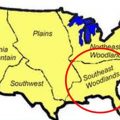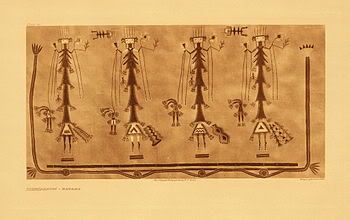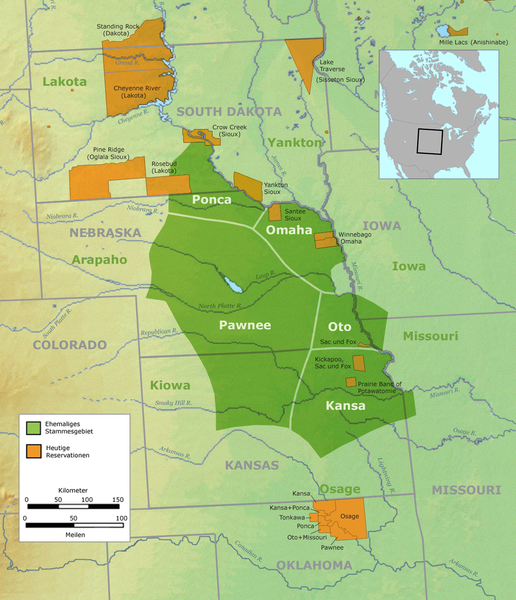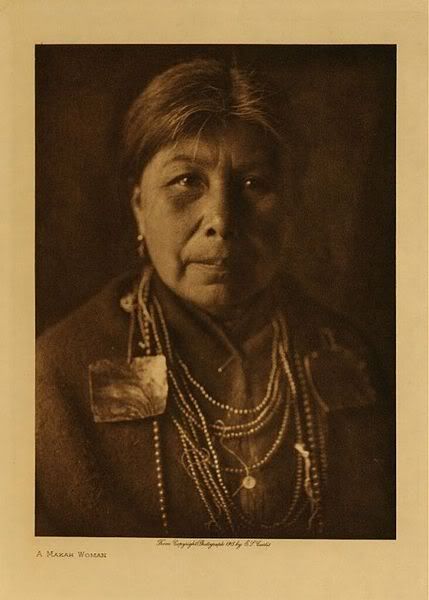( – promoted by navajo)
The Indian nations along the Northwest Coast area of Washington, British Columbia, and Washington were very different than other Indian nations. Life in these Indian nations centered on the sea and its abundant resources. Unlike the Indian nations in other areas, the social life among the Northwest Coast Indians was based on rank and power. Names often reflect this hierarchical organization.
Names are extremely important to the people of the Northwest Coast and a set of names brings with it a social and cultural reality. When one inherits a certain name, one inherits the status that accompanies the name. The set of names within a village was constant, with a flow of living human beings running continually through it, with people occupying the names during their lifetimes. Names are important family property and they are used only on special occasions.
Names were also associated with social stratification and wealth. The right to use a particular name was a form of wealth: ancestral tribal names were inherited. The right to use any name was determined by descent.
Among the Tlingit, a male child was traditionally given a name at birth by his maternal uncle. He would keep this personal name throughout his life. However, when a nephew replaced his uncle, he was then given an honorific clan name. This is a name which was considered sacred and which was used only on ceremonial occasions. These names are associated with the totem animals and their symbols.
At puberty, Tshimshian children were given the first of a series of adult names which were selected from names belonging to the mother’s house. The names often had a reference to the father’s crest.
Among the Nuu-chah-nulth, a newborn was traditionally given a baby name. If the child was a boy, then the name would come from the father’s side, and if it was a girl, then it would come from the mother’s side. In some instances, the newborn might also be given a song as well.
Among the Bella Coola, each name must have originated in connection with an important event. Soon after birth, a name would be bestowed on the child. The name selected for the child must: (1) come from the origin stories of one of the parents’ families, and (2) must not be in use by another family member. While it is possible for two people to have the same name, the names must come from different origins.
Bella Coola names can be transferred from one person to another. A person may have more than one name and each name is associated with certain rights and traditions. If a person transfers a name while still alive, the person gives up all claims to that name. Names can be transferred from a man to a woman and vice versa. At death, a person’s name, or names, could be transmitted to a relative. It was considered important that the owner of a name should know when, by whom, and for what reason the name was first created.
It is not only the human members of the Bella Coola family who are given ancestral names, but also dogs. The first ancestral group had dogs, and these animals had names. Ever since that time their descendants would apply these designations to their own dogs. As with humans, no two dogs can be given the same name at the same time.
Among the Coast Salish, the child’s first name, usually given when the child began to walk, was of little significance. Names, which were considered to be family property, were given at a potlatch or feast. While a new name could be acquired at any time, many would take a new name after marriage.
Among the Kwakwaka’wakw, when children were born they were given the name of the place where they were born. They received their first tribal name at ten months of age. At this time, the baby’s hair was symbolically cut and ceremonies were held to ensure that babies would be safe. When the child was 10 to 12 years old, a third name was obtained. In obtaining this third name, a number of small presents, such as shirts or blankets, would be distributed among the clan or village.
Among the Heiltsuk, a child traditionally received its first name at a potlatch given in its honor. At this time, the chief would dance with the child, holding it aloft to introduce the child and create a place for it within the community. The people who witnessed this ceremony were asked to support the child as it grew up. When the child was older, a second name would be given and the baby name might be passed on to a new child. When a person assumed adult responsibilities and began to contribute to the society, a third name might be given.




Leave a Reply